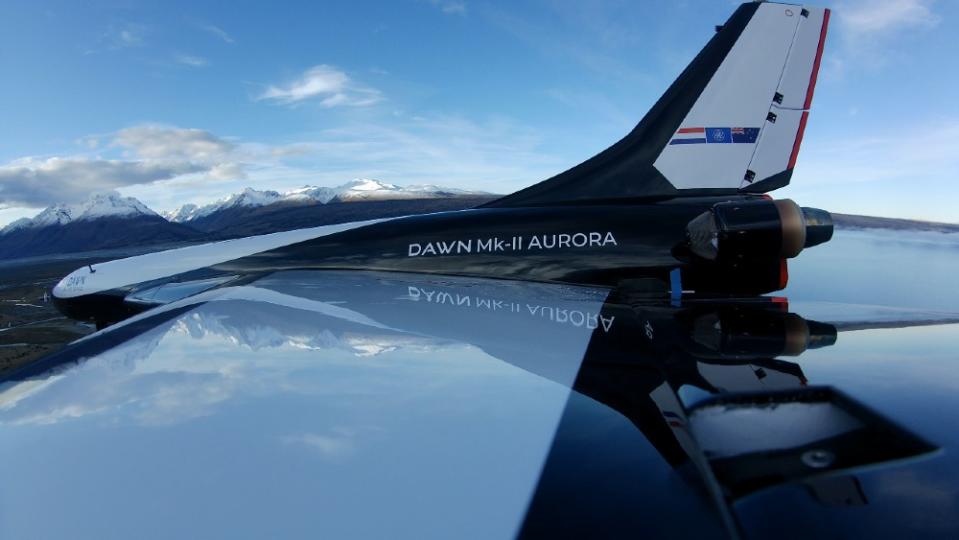This New Reusable Rocket Ship Can Fly From Earth to Space Several Times a Day

- Oops!Something went wrong.Please try again later.
Amazon’s Jeff Bezos and Virgin Galactic’s Sir Richard Branson have already reached the edge of space in their respective spaceships. But could they do it multiple times a day? Stefan Powell can.
Or at least it looks like he’ll soon be able to. Powell is the CEO of the Dutch-New Zealand company Dawn Aerospace, which last month conducted five successful flights of its Mk-II Aurora, which is on track to reach low-space orbit in 2022. The test flights—to 3,400 feet—allowed the company to assess the airframe and avionics on the a 16-foot long, 165-pound mighty might.
More from Robb Report
Meet 'the Booth,' Virgin Atlantic's Intimate New In-Flight Lounge for Premium Passengers
This Luxury Space Balloon Lets You Glide 100,000 Feet Above the Earth With a Cocktail in Hand
The company is also developing a rocket engine, which will go into the Mk-II early next year and allow it to take off from a conventional airstrip, reach low-space, land on the same strip, then do the whole thing again—several times in the same day if desired. Like Virgin Galactic and Blue Origin, space tourism could be part of Dawn Aerospace’s distant future.

Courtesy Dawn Aerospace
“Mk-II will also be used to capture atmospheric data for weather and climate modeling, and to conduct scientific research and technology demonstrations,” Powell told Robb Report, but it’s not the end game. “Mk-II serves as a technology demonstrator for our two-stage-to-orbit-vehicle, the Mk-III.”
The larger craft will arrive a few years later, but it will be able to haul a 550-pound payload, allowing it to haul satellites, cargo and potentially astronauts into space. Like the Mk-II, it will be able to make several trips a day. The size and reusable nature will keep costs down and provide unprecedented access to space—and even an environmentally beneficial alternative.
“Our industry is heavily reliant on vehicles that fly to space once, or that are partially refurbished over weeks or months,” Powell says. “Many launch companies are pursuing mass-manufacturing for lower and lower price points, rather than pursuing cost savings through reusability.”

Courtesy Dawn Aerospace
Powell points to the automotive world. “If you could only use your car once, or a handful of times, before disposing of it, it would hardly be considered sustainable or economical,” he says. “Our team’s view is that it’s no longer acceptable that launch hardware is discarded when the vast majority of its carbon footprint is in its production. Instead, we’re looking to apply the high reusability of aircraft to the space industry.”
Best of Robb Report
Sign up for Robb Report's Newsletter. For the latest news, follow us on Facebook, Twitter, and Instagram.

